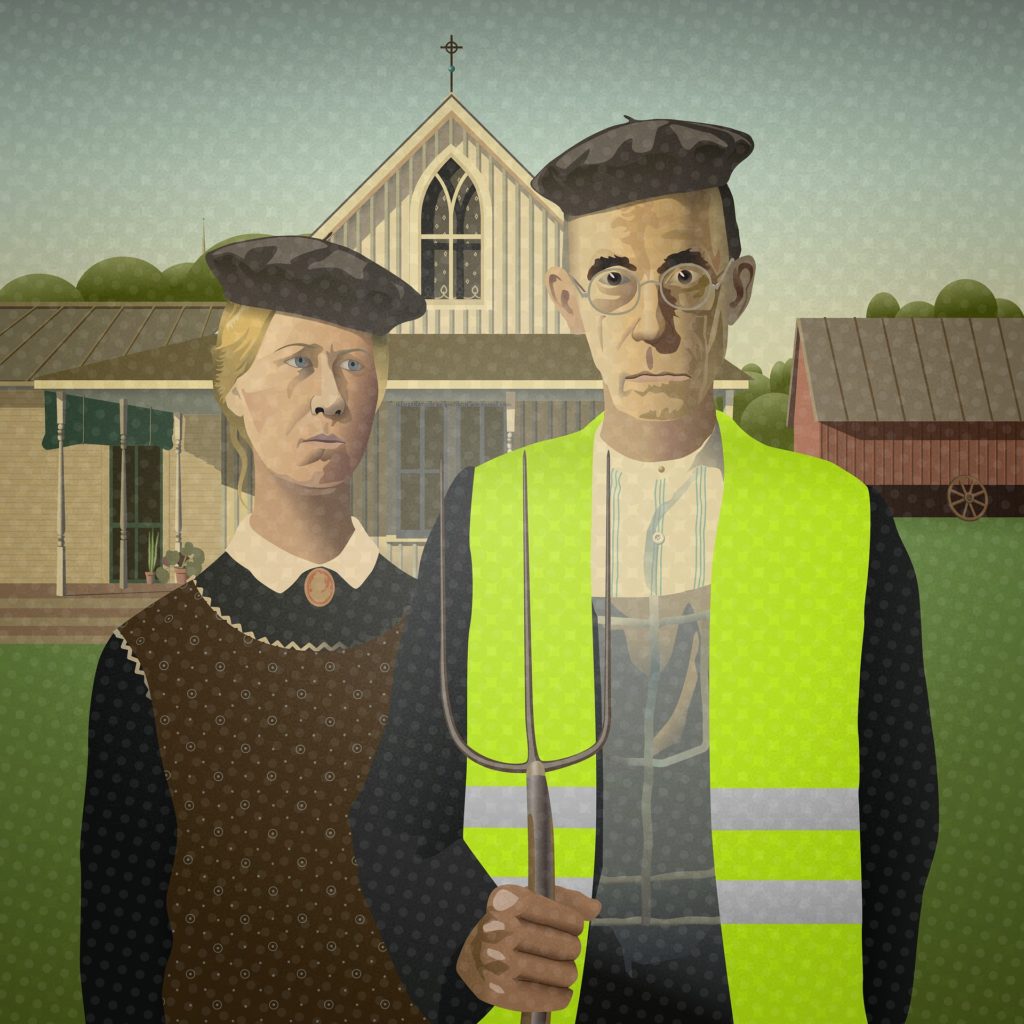What Problems Do We Face?
What Are Some Solutions?
Is the U.S. population rapidly aging?
America is aging. The aging of the population is having profound effects on our economy, healthcare system, and social security system. These effects will only become more pronounced in the years to come.
The aging of America is being driven by the baby boomer generation reaching retirement age. According to the U.S. Census Bureau, the number of Americans aged 65 and older is projected to double from 46 million in 2016 to over 98 million by 2060. This aging population is putting a strain on our social security system, our healthcare system, and our overall economy.
As the population ages, we see a rise in chronic diseases such as cancer, heart disease, and diabetes. These diseases are costly to treat, and they are often treated in hospitals and nursing homes. The cost of healthcare for our aging population is putting a strain on government budgets at all levels.
The rise in the number of seniors is also impacting the workforce. Fewer workers are supporting more retirees, which puts upward pressure on wages. And as more baby boomers retire, there will be even fewer workers to replace them. This will further strain our economy and could lead to slower growth in the years ahead.

What Are The Challenges Of An Older Adult Population?
Population aging is a growing trend in the United States and worldwide. As life expectancy rates continue to increase, so will the number of people living into their golden years. This presents unique challenges for society as a whole, as well as for the aging population themselves.
One of the biggest challenges facing society is how to provide for the needs of seniors. With more and more people living into their 80s and 90s, the cost of health care and other services required by seniors continues to rise.
Increase Funding
Funding for programs that benefit seniors must be increased to meet the needs of this growing population. In addition, more research must be done on age-related diseases such as Alzheimer’s and Parkinson’s to find ways to prevent or treat these conditions.
Family Problems
The aging population also faces challenges within their own families. Many seniors feel isolated and alone with children living farther away and fewer family members available to support them. Efforts must be made to connect seniors with social programs and activities to help them feel connected to their community.
The aging population is a growing trend that presents unique challenges for society. By understanding the needs of seniors, we can work together to find solutions that will benefit everyone involved.
Baby Boomers Aging
As baby boomers age, more and more people are reaching the senior citizen stage of life. And as people live longer and stay healthier in older generations. An increasing number of seniors choose to remain active and engaged in their communities rather than retiring to Florida or moving into a retirement home. This trend has implications for both individuals and society as a whole.
Baby Boomers Want To Stay In Their Homes
On an individual level, baby boomers who want to stay in their homes must plan to ensure their homes are accessible and comfortable as they age.
This may mean making some modifications to the home, such as installing grab bars in the bathroom or widening doorways to accommodate a wheelchair. It also means being proactive about one’s health so that potential problems can be diagnosed and treated early.
Redesigning Land Use
On a societal level, seniors’ needs must be considered when planning new developments or making changes to existing ones. For example, suppose a neighborhood is being redesigned. In that case, thought must be given to making it accessible for people of all ages and abilities.
In addition, businesses and community organizations should create opportunities for older adults to participate in activities they enjoy. This could involve anything from offering discounts to seniors at movie theaters to set up special classes or clubs at the local community center.
As our population ages, we must find ways to accommodate the needs of seniors who want to stay active and engaged in their communities. Doing so can ensure that everyone can enjoy a high quality of life as they age.
Population Aging Creates Additional Concerns
The aging process brings a lot of changes, both physically and emotionally. Unfortunately, not all of these changes are positive. Seniors may experience declining hearing, vision, and mobility, making it difficult to live independently.
They may also face new emotional challenges such as loneliness and depression. They must receive support from family members, friends, and professionals to adjust successfully to these changes. With the right support system in place, seniors can continue to lead happy and fulfilling lives despite the challenges that come with aging.
How many Americans will be 65 and older in 2030?
As the leading edge of the Baby Boomer generation reaches retirement age, the number of Americans 65 and older is rapidly growing. By 2030, it is projected that there will be over 72 million seniors in the United States, accounting for nearly one-fifth of the population. This dramatic increase in the elderly population will profoundly impact society, from the workforce to healthcare to Social Security and beyond.
It is essential to understand the ramifications of this demographic shift so that we can plan for and adapt to the changing landscape. Politicians and policymakers need to start thinking about how to meet the needs of our aging population best, and businesses must begin preparing for a decline in consumer spending power. The coming years will undoubtedly bring many challenges and opportunities as we grapple with this new stage in American life.
What percentage of the U.S. population is over 65?
For the first time in U.S. history, there are more adults over 65 than children under 18 in our total population. The percentage of people over 65 has been on the rise for decades and is projected to continue to grow in the years to come. This trend is driven by both increasing life expectancies and declining birth rates. While this shift presents challenges for society, there are opportunities for those who can take advantage of them.
What percentage of the U.S. population is over 70?
According to the latest census data, approximately 13 percent of the United States population is over 70. This means that over 37 million Americans are in this age group. While this age group is growing, it is still a relatively small percentage of the population. The baby boomer generation, born between 1946 and 1964, is now entering this age group. As they do, their impact on society will be increasingly felt.
What age is the elderly in the USA?
The elderly are typically those 65 years and older in the United States. However, there is no definitive answer to the question of what age is elderly, as this can vary depending on the individual’s perspective. Some may consider someone in their early 60s to be elderly. In contrast, others may not think anyone over 70 to be elderly.
Generally speaking, though, the term elderly is used to describe those who are no longer considered to be in the prime of their lives. They also may have more health problems and require more care than younger people. In the U.S., the number of people aged 65 and older is increasing, and it is estimated that by 2050, one in five Americans will be 65 or older. This growing population of elderly Americans presents both challenges and opportunities for society as a whole.
What is the number one killer of Older Adults?
Heart disease is the leading cause of death in the United States for adults over 65. This health problem occurs when a buildup of plaque in the arteries can lead to a heart attack or stroke.
While the elderly are more at risk for developing this condition, many controllable risk factors contribute to its development.
For example, those with high blood pressure, high cholesterol, or who are obese are more likely to develop heart disease.
Additionally, smoking and a sedentary lifestyle can also increase one’s risk. There are several ways to prevent heart disease, such as eating a healthy diet, exercising regularly, and quitting smoking.
While there is no one magic solution, if we focus on these lifestyle changes, we can significantly reduce your risk of developing this serious health condition.

What Concerns Do Senior Citizens Have?
According to a recent study, older Americans are projected to make up a larger share of the population in the coming years. This is because people live longer, and the Baby Boomer generation is getting older.
As a result, seniors are a population that is often overlooked concerning concerns.
However, there are many things that seniors worry about daily.
One of the biggest concerns for seniors is staying healthy and independent for as long as possible. Many seniors worry about being able to take care of themselves and whether they will be able to get the help they need if they need it.
Another big concern for seniors is money. They may be worried about having enough money to live on in retirement, and they may also be concerned about how they will pay for healthcare or long-term care if they need it.
Finally, seniors often worry about their relationships and whether they will have someone to help them through their golden years. While these concerns are all valid, there are ways to address them, and seniors should not feel like they have to face these challenges alone.
What do seniors worry about the most?
There is a myriad of things that seniors worry about daily. From health concerns to money troubles, the list seems never-ending. However, one worry appears to stand out among the rest: whether they can live comfortably and independently in their later years.
This fear is understandable, as the prospect of growing old can be both daunting and uncertain. It can be hard to know what the future holds, and many seniors worry about whether they will have enough money to cover their costs. They may also be concerned about their health and whether they can care for themselves as they age.
All of these worries can be daunting, but there are steps that seniors can take to help ease their minds. They can give themselves the best chance at a comfortable retirement by saving money and staying healthy and active. And suppose they do find themselves in a difficult situation later in life. In that case, plenty of resources are available to help them out.
What Are The Main Issues With An Aging Population?
As the world’s population continues to age, many important issues arise. Concerns about health, finance, social connectedness, and intergenerational relationships are the most pressing issues in older adults.
Health
Health is a top concern for aging populations. Diseases common in older adults, such as Alzheimer’s and cancer, require expensive treatments and can negatively impact the quality of life. In addition, the bodies of older adults are less resilient to injury and illness.
Health care costs are a significant concern for societies with aging populations. As people age, they require more medical care, which can be expensive. In addition, advancements in medical technology have made it possible for people to live longer lives, further increasing the cost of health care.
Exercise, Diet And A healthy Mind
Finance
Finance is another critical issue for aging populations. As people age, they often require more medical care, which can be expensive. In addition, many older adults are unable to work due to health problems or age-related reductions in productivity, leading to a decrease in income. This can create a financial burden for families and society as a whole.
The workforce availability issue arises from the fact that there are fewer working-age people to support a larger population of retirees. This could lead to a shortage of workers and increased competition for jobs. It could also lead to a decline in the standard of living for retirees, as they would be reliant on government pensions and social security payments.
Social Connectedness
People often lose contact with their friends and family as they age. This can lead to loneliness and isolation. However, social connectedness is another crucial issue for aging populations. Older adults with strong social ties tend to be healthier and happier than those without.
There are many ways to maintain social connections as you age. One is to stay involved in your community. Join a club or take a class at the local community center. Another is to keep in touch with friends and family online or by phone. You can also visit them whenever possible.
It is vital to maintain your social connections. They are an essential part of healthy aging.
Intergenerational Relationships
Intergenerational relationships are essential for both older and younger generations. Older adults can provide valuable wisdom and experience to younger generations, and younger generations can provide energy and support to older adults. However, as people age, they often become less interested in interacting with younger people, leading to a breakdown in these relationships. This can be problematic for both parties involved. The older adults may miss out on meaningful opportunities to share their knowledge, and the younger generations may not have access to the experience and perspectives of older adults.
There are several ways to address this issue. One solution is for older adults to make a conscious effort to stay engaged with younger people. They can attend events where the two groups interact or reach out to young people to maintain communication. Another solution is for younger generations to make an effort to connect with older adults. This can be done by attending events geared towards older adults or reaching out to family members or friends who are seniors.
Intergenerational relationships are essential to our society, and we must find ways to keep these connections strong. By working together, we can ensure that the wisdom and experience of older adults are passed down to the next generation. And that the energy and enthusiasm of young people are shared with those who need it most.
Social Security And Pensions
The aging of society is a pressing issue that requires attention from policymakers and the public. One concern is the future of social security, Medicare, and pensions.
With more people living longer, there is an increasing demand for these benefits. However, with fewer people working, less money is available to fund these programs. This could lead to reduced benefits or even bankruptcy for social security and pension systems.
Finding a solution to this problem is vital before it becomes too late. Policymakers should look for ways to make the system more sustainable, such as by increasing the retirement age or finding new sources of revenue.
The public can also help by contributing to their retirement savings accounts and being mindful of how much they spend in their later years.
Elder Abuse
As our populations’ age, the problem of elder abuse is becoming increasingly prevalent. Elder abuse can take many forms, including physical abuse, sexual abuse, psychological abuse, financial exploitation, and neglect. These types of abuse can have severe consequences for elderly victims, including bodily injury, mental health problems, and even death.
There are several reasons why elder abuse is on the rise. One reason is that our societies are aging more rapidly than ever before. The number of people over 65 is multiplying, and this population is particularly vulnerable to abuse.
Another reason is that many older adults live alone or are isolated from their families and friends, making them more susceptible to abuse. And finally, many older adults are unaware of their rights or how to protect themselves from misuse.
The consequences of elder abuse are tragic. Victims often experience physical injuries, mental health problems, and even death. Elderly victims of abuse often require costly medical care and long-term services. The emotional toll on victims can also be devastating.
Elder abuse is a growing problem that we must address head-on. We need to educate older adults about their rights and how to protect themselves from abuse.
We also need to create systems that will identify and respond to elder abuse quickly and effectively and give us more feedback on the problem. By working together, we can end this terrible crime against our elders.

The Final Thoughts
The aging population is constantly growing and will continue to grow in the years to come.
This is a challenge because more and more seniors need our help and care.
What do seniors worry about the most? One of the biggest things that they worry about is their health. They want to stay healthy and independent for as long as possible.
There are also concerns about finances and whether or not they will be able to afford to live comfortably in their golden years.
Lastly, many seniors worry about being alone and lonely in their old age.
All of these concerns are valid, but there are steps that we can take as a society to help make the aging process easier for seniors.
We can provide more resources and services for them, ensure they have a comfortable place to live, and create opportunities for socialization. Addressing these issues can help make the golden years a time of happiness and fulfillment for all seniors.

